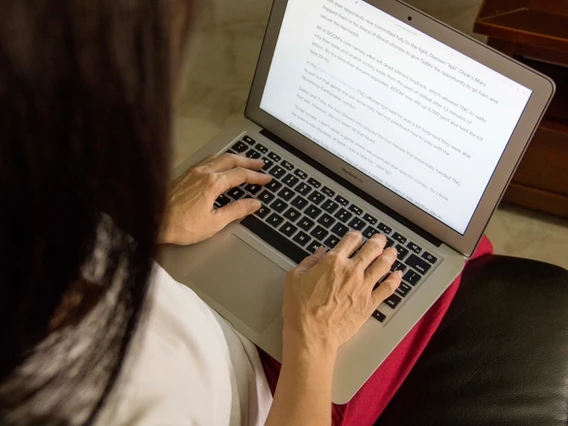Shall we talk about Qualis Book Rules?

For many researchers, the Qualis Books system is unknown and even difficult to understand. Let’s get this straight and also explain where Pimenta Cultural comes into this story.
Academic life brings many rules, acronyms and, incredible as it may seem, goals to achieve. It’s a target in terms of academic performance, the deadline for completing the research, the indexing of published work and also the target for scientific productivity. Researchers are subject, by the very system of quantitative evaluation of production, to publishing a series of articles, book chapters and books to reach a certain number and not necessarily a specific substantial result of their research. It’s as if scientific research were part of a factory production line where you have two or more articles to publish in a given period of time and in university publishing houses or scientific journals which, in turn, must also comply with the specific rules of this ecosystem.
This is where Pimenta Cultural comes in, also incorporated into this world of goals and rules experienced not only by the researchers who publish with us, but by our executive editors since the publisher was founded in 2012.
In view of the large volume of publications of books and book chapters, Capes noted in 2000 that the dissemination of this scientific knowledge would be justified by the creation of the Qualis Books assessment. This began to qualify and punctuate the bibliographic production of the Postgraduate Programs. It’s worth noting that Qualis Books evaluates various productions by teachers and students, but we’ll stick here to discussing the criteria for books and book chapters.
WHAT ARE THE SCORES FOR THE WORKS PUBLISHED BY PIMENTA CULTURAL?
Various criteria are used in these classifications, but what is clear is that each area of knowledge uses its own evaluation model, assigning different weights to each indicator to be met. In this way, a book evaluated by one area of knowledge cannot be compared to another since it is up to each area to distribute the score in levels and among the quality indicators on a scale of 0 to 100 points.
What Capes determines is that the evaluation of books is singular, “per se“, even in collective works. Thus, the stratum of the work extends to all the chapters published in it, following the same logic as the Qualis Periodicals.
Almost every week we receive messages from researchers at various universities around the country asking us to find out the publisher’s Qualis Books. He even informed us that certain calls for tender require publishers to have an intermediate Qualis rating. Well!
For years, we have made several direct and indirect attempts to access the Capes reports and with reliable sources. The fact is that these reports are not published on the Sucupira Platform. This evaluation serves, as described in the Book Classification Proposal of the Capes “Qualis Livros” WG, to help classify and score Graduate Programs and not the work itself or the publisher that published it.
To sum upPimenta Cultural, or any other publisher, does not receive a Qualis Books classification, like scientific journals. Qualis Books is solely and exclusively directed at the book, it is an individual evaluation of the work itself. Nor can we say that the works published will have certain strata. The committees appointed by Capes, not the publishers, carry out the evaluations. What we can do are just simulations based on documents made available by Capes, based on compliance with the Quesitos and their indicators for assessing the quality of each work.
However, when we have access to a Capes report for an Area of Knowledge, we can state and publicize the score received for that specific work. We had access to a report from the Environmental Sciences Area on the Capes website (2013-2016 Quadrennium) in which two texts published by Pimenta Cultural were evaluated as L1 (distance education and teacher training; and new technologies for Higher Education).
What Pimenta Cultural does to ensure that the work is well evaluated and has the possibility of receiving the highest possible stratum is to strictly follow each indicator, helping authors and graduate programs to prepare their texts and documents.

AND WHAT ABOUT THE EVALUATION CRITERIA?
Some of the evaluation criteria are the responsibility of Pimenta Cultural, i.e. they are directly linked to our practices as an academic publisher. Other criteria are the responsibility of the authors when they report the publication of the work to the Graduate Programs. Finally, the Graduate Programs are responsible for submitting this information correctly and completely to the Sucupira Platform. Note that this is a production chain, involving three specific agents at different times and not one person directly responsible for the score achieved.
Finally, there is still the decision of the Commission of each area of knowledge on whether or not to evaluate the complete work, which no longer depends on Pimenta Cultural, the authors or even the Postgraduate Programs.
As for the complete reading of the work by the Qualis Books Commission of each Area, the Book Classification Proposal proposes:
It is at the discretion of each Area, considering the total volume of book production to be evaluated, whether to use only the indicators from Quesito I and/or also the indicators from Quesito II and/or Quesito III.
For example, for the Areas in which the volume of items to be evaluated is considered high, the classification of all the works could be based only on the formal indicators of the book’s quality, contained in Question I, which are selected by each Area. The indicators in Questions II and III, which are more qualitative in nature and require an examination of each product per se, could only be used to evaluate the productions indicated by the programs as the most relevant in the period. (CAPES, 2019, p. 15-16)
In other words, the system for evaluating works is not the same for all the Areas of Knowledge, each of which is free to define, through its own decisions, the procedures to be adopted.
NOW LET’S LOOK AT THE INDICATORS FOR EACH ITEM
To recap: the Capes Qualis Books Quadrennium ends in December this year (2020). The next evaluation won’t be until 2025, for the 2021-2024 quadrennium.
Item I: formal indicators of book quality (CAPES, 2019, p. 8-9).
Adherence to the PPG’s evaluation area and strategic institutional profile:
– Language (national, foreign, multilingual)
– Type of Publisher
– Financing
– Editorial Board
– Information about the authors
– Opinion and peer review
– Table of contents
– Link to research line
Additional points:
– Awards
– Indication as a reference work by scientific and/or professional societies
– Translation of the work into other languages
Item II: set of indirect indicators of book quality (CAPES, 2019, p. 9).
– Nature of the text (valorization of scientific production)
– Preferred Reader (level of complexity in the treatment of themes)
– Origin of the work (indicator of the articulated knowledge production network)
Question III: requires full reading of the work in the evaluation process (CAPES, 2019, p. 9).
– Innovation
– Relevance
– Impact
In view of these indicators, to make it easier to read, we have divided each Question into Responsibilities: of the publisher, of the author and of the Postgraduate Program:
– From the Graduate Programs at the time they report the information on the Sucupira Platform: language (national, foreign, multilingual), type of publisher, funding, editorial board, information about the authors, opinion and peer review, table of contents and link to the line of research, award, indication as a reference work by scientific and/or professional societies, translation of the work into other languages.
– From the author: funding, link to the line of research, award, indication as a reference work by Scientific and/or Professional Societies, translation of the work into other languages
– Pimenta Cultural takes care to comply with the criteria: language, type of publisher, editorial board, information about the authors, peer review, table of contents.
Some of the items evaluated are subjective and are carried out exclusively by the Committee of each Qualis Books Area, which are beyond any kind of control or compliance with rules by the authors, by Pimenta Cultural or by the Postgraduate Programs. These are: nature of the text, preferred reader, origin of the work, innovation, relevance and impact.
For more in-depth information on each of them, go to our website and check them out.
I’ll end this topic by explaining, however, that the Committees of each Qualis Books evaluation area are free to draw up their own form, among those listed by Capes, as well as include or exclude the categories they deem pertinent and assign each criterion the score that suits them.
CLOSING THE 2017-2020 QUADRENNIUM
Capes collects information on books published for analysis every four years. The last evaluation was from 2013 to 2016, in which full-length books and book chapters were given their due strata.
Capes is now closing a new cycle of evaluations for publications made between 2017 and 2020, meaning that books published within this period will be evaluated in 2021 by means of a report from the Graduate Programs.

As a result, the next Capes Quadrennial Qualis Books evaluation will not be until 2025. So the time to publish is now and there’s still time!
Reference:
CAPES. Book Classification Proposal. Qualis Books” Working Group. Ministry of Education. Coordination for the Improvement of Higher Education Personnel. Brasilia, 2019.





